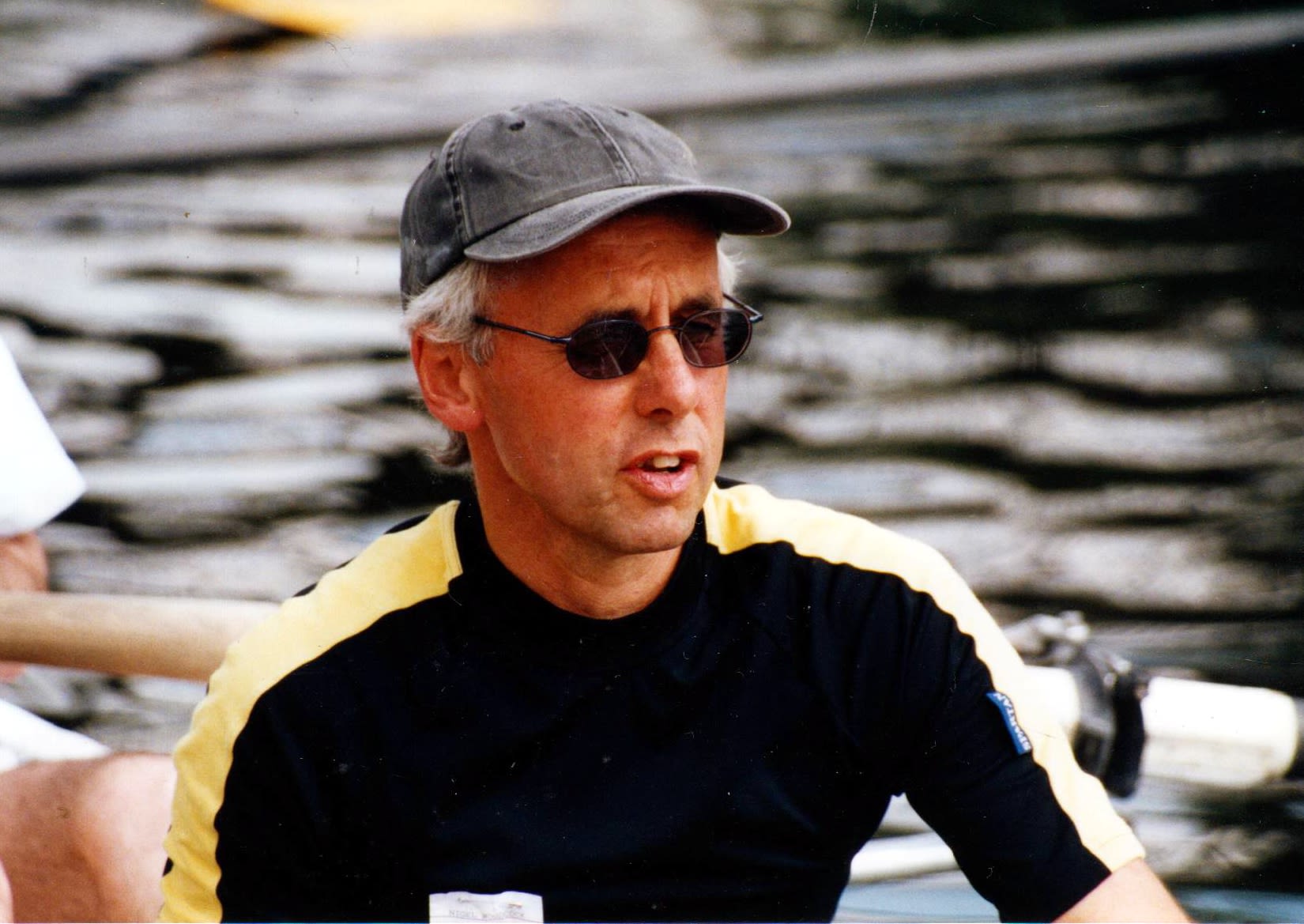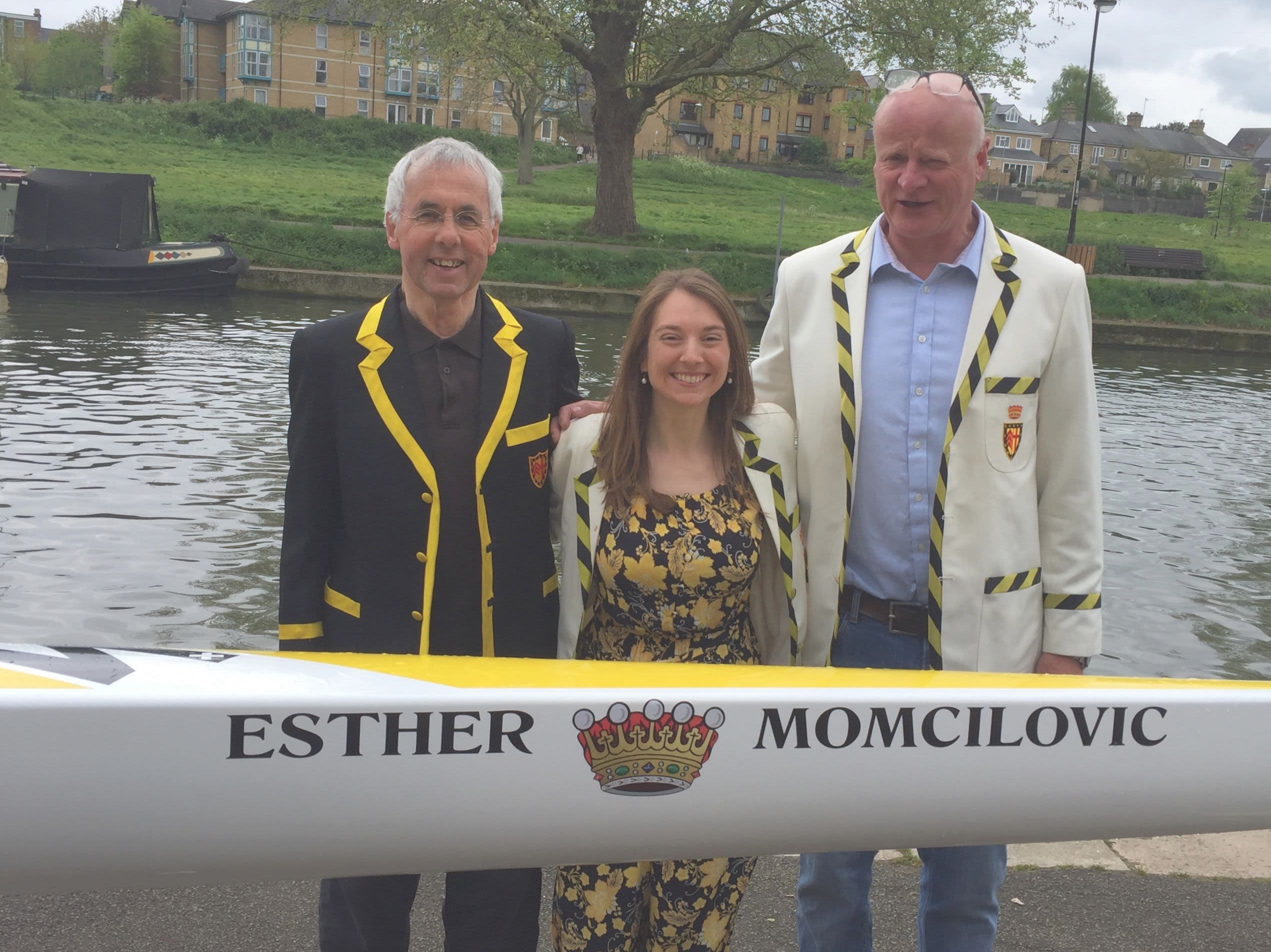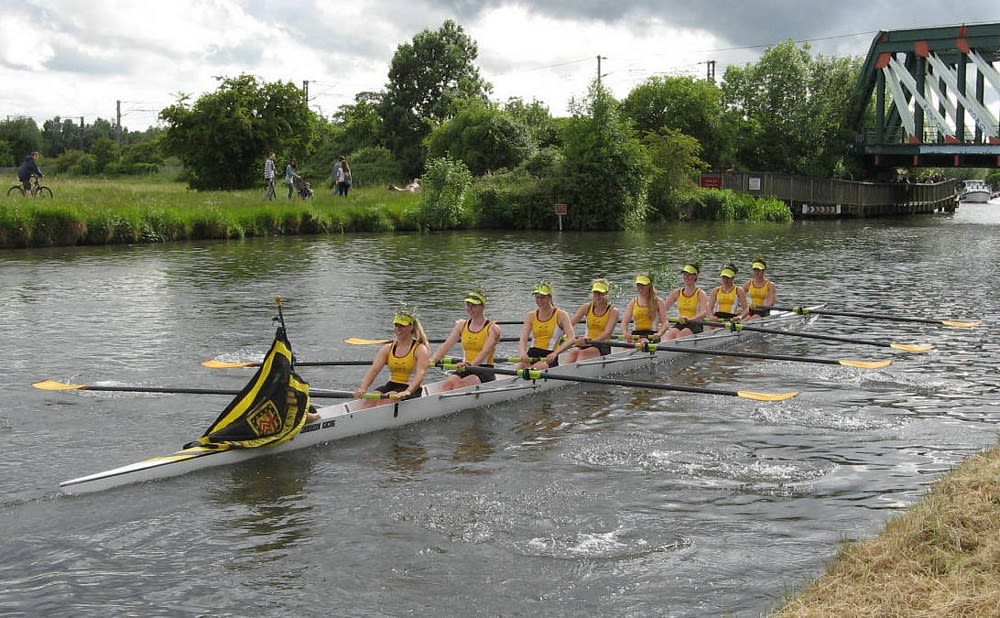The older we get,
the faster we were
Nigel Woodcock (Fellow 1987) looks back on 20 years as President of Clare Boat Club

If I’d known how much time the job would take up,
I might not have agreed to do it. Or at least I’d have asked Adrian Travis more searching questions in 2001 before agreeing to take over from him as President of the Boat Club!
I’d not had much experience of rowing. Until the age of 50 my main sporting activity was as a long-distance runner and my main sporting contribution in Clare was competing for, and even organising, the College cross-country team. By early 2000, my joints were suggesting that I switch to a less impactful sport when, coincidentally, Adrian was trying to reconvene a Fellows’ rowing crew. After minimal instruction and a couple of outings in an eight, I was hooked. I joined a town rowing club, took part in the Town Bumps, learned to scull and started to row in the Clare boats. When Adrian took a year’s sabbatical leave in 2001, of course I said that I’d stand in as President until he returned. Somehow, although he did return, I’m still in the job and the post of Senior Treasurer later inherited from Ken Riley.

Nigel Woodcock with boatman Andy Watson and alumna Esther Momcilovic in 2019. Esther is now a Manager of the Boat Club Fund.
Nigel Woodcock with boatman Andy Watson and alumna Esther Momcilovic in 2019. Esther is now a Manager of the Boat Club Fund.
What do my jobs involve? Most crucially, I and three others – Phil Jones (Fellow 2004), Sam Luke (1979) and Esther Momcilovic (2007) – manage the endowed fund that yields the majority of the Boat Club’s income, setting budgets that maintain the long-term value of the fund that alumni donations have built up. Then I work with Andy Watson – Boathouse Manager and Head Coach – and the student Honorary Secretary of the Club to keep termly expenditure within those budgets. We also deal with the ever-increasing volume of paperwork involved in running a boat club, compounded recently by the COVID operating procedures. Andy and I liaise regularly with Clare Hall BC and Champion of the Thames RC, who share our boathouse facilities, to harmonise the activities of the three clubs. We also attend the regular meetings of the student committee of the Boat Club, which deals with the many day-to-day issues of organising up to a hundred rowers, coxes and coaches into a fleet of eight or so boats.
All this work is behind the scenes and somewhat routine, but I have always liked to be involved in the activities of the Club on and by the river. I used to train and race with one of the lower men’s boats, usually the Third Boat. Fellows can be granted special permission to row in inter-college races as long as they are not too good at it! After illness put an end to my rowing, I could still be involved on the bank, particularly in Bumps races, helping to start the crews and then cycling with the races. This is the most exciting of spectator experiences, and I’ve helped in about fifty races each year for about fifteen years: a lot of enjoyment. More rewarding still is the chance to get to know generations of students; individual characters are very evident in the tense moments before and during races.
Fortunately, enjoyment of the rowing races on the Cam isn’t dependent on being the fastest crew on the river. In Bumps races, slower boats are effectively matched against boats of similar standard, and winning one of these subsidiary contests is just as elating as for the top crews. However, Clare still manages to compete at the level of the traditionally strong rowing colleges: mostly the larger colleges such as Caius, St John’s, Trinity and Downing. Most memorably during my time in the Boat Club, the Clare women have twice ended Head of the River: in 2006 in the Lents and 2013 in the Mays.

Clare women go Head of the River in the May Bumps of 2013
Clare women go Head of the River in the May Bumps of 2013
Competition aside, there is another metric of the Boat Club’s success of which we are particularly proud. On average, we have the second highest rowing participation rate of any college. About 14% of Clare students are involved in the May Bumps each year, and another few percent try out rowing in the Michaelmas Term. We pride ourselves too on the inclusive atmosphere across the Club. The Boat Club therefore becomes an important social support network for students, not merely a place to get some exercise. The supportive role of the Club has been particularly important during the pandemic period.
Clare Boat Club, however, involves more than just the current cohorts of students. We have over 1,000 alumni who have competed for the Club, and over 600 of them are in regular contact with us through our Facebook posts. Several hundred have donated to the Boat Club Fund or contributed directly to the cost of a new boat, a rowing machine or other equipment. Perhaps the most rewarding part of my job is being involved with this large and loyal group of Boat Club alumni. As well as regular personal contacts, we produce a termly e-newsletter, run our biennial Relics’ Regattas and offer the chance to row on the morning after the decadal Reunion Dinners. I regularly cox these reunion crews, coaxing as well as steering them through an outing designed as much to clear the head as to exercise the body.
Although I’ve now retired from my ‘day job’ teaching Earth Sciences, I’m still enjoying involvement with the Boat Club. I’m looking for another Clare Fellow to take over as President or Senior Treasurer – just for a year – but haven’t succeeded yet!

